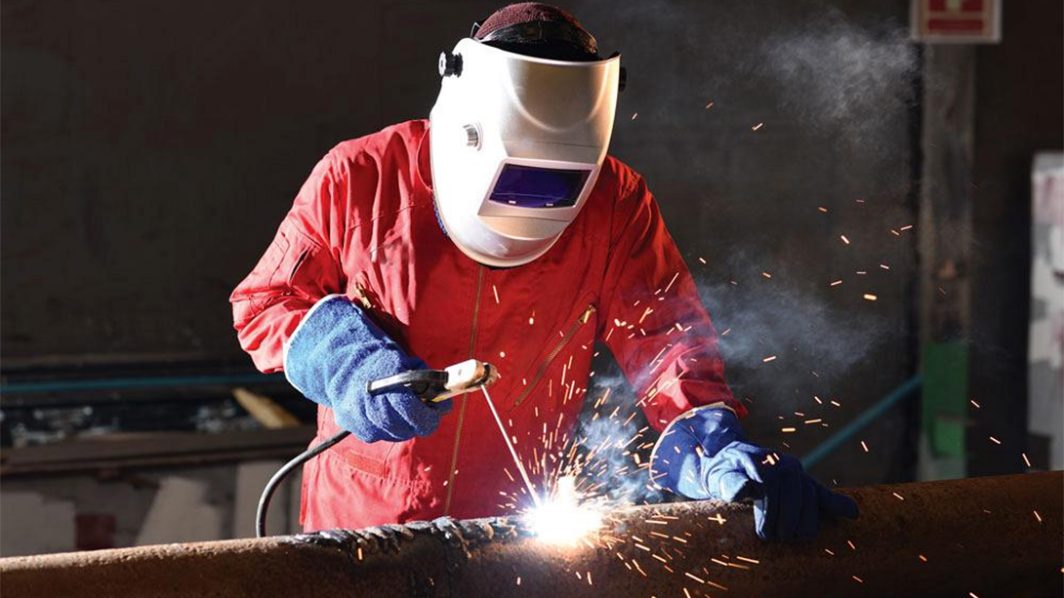
Welders and others who work or live near construction sites or in industrial areas may be at a greater risk of developing Manganese poisoning or Manganese toxicity,![]() a neurological disorder that closely resembles Parkinson’s disease. Links have been made between welding rods, Manganese toxicity, and Manganese poisoning. Studies on welders using welding rods that contain Manganese indicates that there may be a strong link between fumes and dust released while welding and a series of serious injuries and deaths among welders and others exposed to those fumes. Among the groups who are at the greatest risk for Manganese toxicity and Manganese poisoning include welders, railroad workers, miners, and steel workers. Manganese is also present in some pesticides, such as maneb or mancozeb, and in methylcyclopentadienyl Manganese tricarbonyl (MMT), a fuel additive in some gasolines.
a neurological disorder that closely resembles Parkinson’s disease. Links have been made between welding rods, Manganese toxicity, and Manganese poisoning. Studies on welders using welding rods that contain Manganese indicates that there may be a strong link between fumes and dust released while welding and a series of serious injuries and deaths among welders and others exposed to those fumes. Among the groups who are at the greatest risk for Manganese toxicity and Manganese poisoning include welders, railroad workers, miners, and steel workers. Manganese is also present in some pesticides, such as maneb or mancozeb, and in methylcyclopentadienyl Manganese tricarbonyl (MMT), a fuel additive in some gasolines.
Fumes released when Manganese is burned contain several chemicals, including manganese, fluorine, zinc, lead, arsenic, calcium, sulfur, chrome, and nickel. In addition, these fumes also contain the gases carbon monoxide (CO), carbon dioxide (CO²), various nitrogen oxides (NO, NO², and others), and ozone. Each of these chemicals has the potential to harm the body. Of these, Manganese is especially toxic. Medical studies of people who have been exposed to Manganese indicate that “Abnormal and toxic concentrations of Manganese in the brain, especially in the basal ganglia, are associated with neurological disorders similar to Parkinson’s disease” (Takeda, 2003) Exposure to high levels of manganese, such as those inhaled by a welder, are known to be harmful to the central nervous system. Manganese poisoning and Manganese toxicity may develop with as little as three months exposure. Symptoms of Manganese neurotoxicity include a shuffling gait, slack facial muscles, speech difficulties (including slurred speech), depression, and general psychological imbalance. A recent clinical study of welders exposed to Manganese found that welders who had developed Parkinson’s disease typically began showing symptoms 15 years earlier than typical Parkinson’s patients. Doctors are still researching this possible link between welding, manganese, and Parkinson’s disease.
Other research has also linked Manganese to serious complications. A Canadian research team found that “chronic exposure to Manganese leads to selective dopaminergic dysfunction, neuronal loss, and gliosis in basal ganglia structures together with characteristic astrocytic changes known as Alzheimer type II astrocytosis (Normandin, 2002)
The risk for Manganese poisoning has been well established. However, these risks of Manganese toxicity have been ignored by the manufacturers of welding rods. We invite you to read the rest of this special report to learn more about the dangers of Manganese exposure, Manganese toxicity and how you can be compensated for any injuries you may have suffered as a result of Manganese toxicity.




